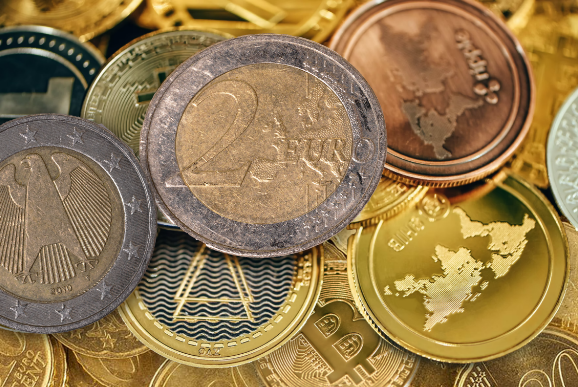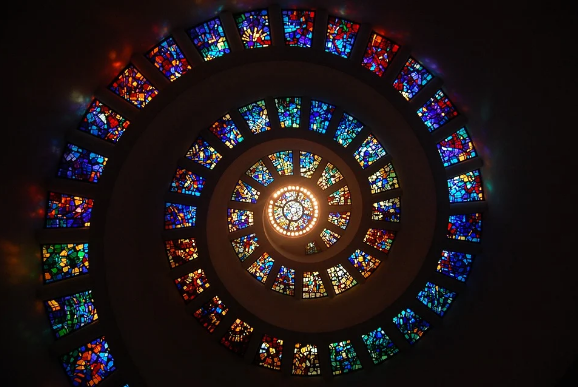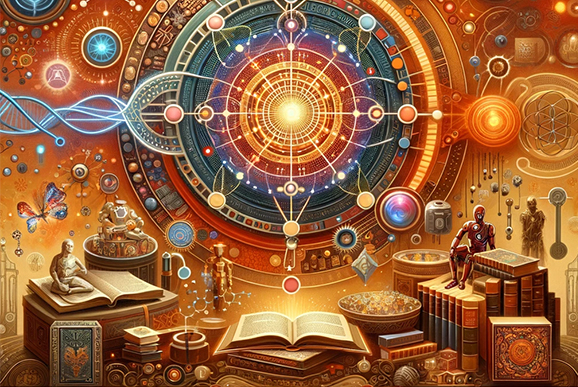“We have to be the change, we want to see in the world“
- M.Gandhi 1869-1948
Interests

The Open Society in the 21. Century
Events over the past decade revealed a new systems clash: Open Societies versus digital autocracies, which are competing to provide better solutions to tackle climate change and pandemics, overcome poverty, and offer reasonable jobs. However, which is doing a better job? I argue, that the current autocratic experiments are flourishing based on the preconditions that they cannot generate independently: Price allocation in free competitive markets; a rigorous debate on facts in an interdisciplinary scientific discourse; free public speech and a free, critical, investigative press; a creative, pluralistic cultural scene; and the building of social capital based on interpersonally generated trust and reciprocal tolerance. These conditions all draw on a human and person-centred approach and are superior to any attempt to regulate society through a collective, non-democratic top-down process. Autocracies depend on Open Societies and must import relevant information generated only in Open Societies, and thus remain self-limiting, parasite and cannibalising. There is nothing more powerful than a liberal order. I am member of the german liberal party: www.fdp.de
Integral Mental Health
For the first time in human medical history, we are now able to access all the different medical systems that have ever existed on this planet and integrate their wisdom into diagnosis and treatment. None of them are 100% wrong and all of them have the potential to contribute to the improvement of medical conditions and wellbeing. With an evidence base of less than 20% in conventional medicine, we must think outside the box. Some of these medical systems are thousands of years old, others are being practised in daily life by millions every day; some offer powerful cures in acute medicine, others in the treatment of chronic conditions, again others are powerful tools to prevent medical conditions. We cannot afford to ignore these experiences and this knowledge. There are only two forms of medicine: good and bad. The integration of conventional medicine and complementary-alternative medicine (CAM) creates the most promising conditions for greater health and a more balanced life. Integral approaches are used in particular in the treatment of mental and chronic pain disorders and include meditation, yoga, acupuncture, phytotherapy, supplements, diet changes and many more, all in a hospital setting: visit our hospital or see here.


Transformative Finance
Conventionally we consider demographic changes (birth control, women’s health, controlled migration), innovative technology (renewable energies), exponential economic growth (austerity versus deficit spending, redistribution) and global governance (human rights, democracy, institution-building) as the four major components of any future narrative. But there is a missing link. There is no way to envision and manage our future without rethinking and reshaping our monetary system. Over 80% of the world population does not benefit adequately from existing financial institutions. Every endeavour that fails to offer a solid financial plan to address the upcoming challenges—from alleviating poverty to accessing health care, to entering schooling, to finding a job, to tackling the degradation of the environment to name but a few—remains a purely rhetorical exercise. The amount of money we currently distribute to (global) commons (sustainable development goals, SDGs) remains below 0.7% of global GDP and is one gear to slow and one scale too small to finance our future. The only way to finance our future is to enlarge and transform our international trading and payment systems and the role of monetary regulators. A new, evidence-based and out-of-the-box approach, mainstream economy is currently missing completely, is necessary. In a nutshell: it is a parallel monetary system, operating optionally and complementarily to the given system, which is going to be the game changer. And we are talking about big money. Research has demonstrated a 6 trillion USD bill necessary to—really— finance our common future. The elephant is in the room, but nobody wants to talk about it. In an era of ‘the new normal (zero interest rate)’ where capital comes for free, it will always outperform human labor. There is fine and subtle but distinctive difference between redistributing money and a pre-distributing mechanism that ensures a living (social security, education, minimum wages, a decent pension, access to health care, environmental protection) before we start the competitive game between Mr. Joe and Mr. Yang, between labor and capital, between corporates around the world, between the current and the next generation and between mankind and nature. This entails new forms of social entrepreneurship, a new lifestyle, and post-growth strategies operating successfully within a new, parallel monetary system (CBDC). The future wealth of nations requires a transformative mechanism that is not only beneficial for the 1% (digital natives, asset managers, those with inherited wealth and IT technologists), but for the other 99%, too. If this sounds too complicated, just call me or see: WAAS-Initiative: The TAO of Finance
Creativity Response
Despite rising expenditures and increasing enrolment rates on a global level, educational output is stagnating, if not declining. There is increasing empirical evidence that we need a completely different approach to enhancing the learning curve; this holds true for early childhood, primary education, secondary education and higher education. Most existing educational programs do not tap into the full creative potential of our minds and our brains and often lead to suboptimal outcomes both for the individual and for society as a whole. Findings in clinical psychology, neurobiology and social psychology are not sufficiently considered when setting up appropriate educational programs. It is not the cognitive part of the curriculum that makes a difference, but rather the non-cognitive features (including stress management, impulse control, self- regulation, emotional attachment etc.) that improve creativity. A ‘six-pack’ of features, including exercise, nutrition, social contact, mindfulness-based practices, sleeping well, and multi-sensory learning, can be easily introduced as part of a ‘creativity response’. They are simple, affordable, evidence-based and efficient strategies that can be implemented promptly without additional costs, increasing our learning curve.


Resilent Anthropocene
Mankind is undergoing an evolutionary transformation within a new age, called the ‚Anthropocene’. And there are several ways to interpret this mega-shift. Some authors call it the ‘Great Divide’ between the tribalists and the globalists (Robb Smith), some call it a ‘Metacrisis’ (Sean Esbjorn-Hargen) affecting all parts of our lives. I call it ‘New Thinking’: a thinking in which we are able to identify that the ‘way a problem is mentally framed is the real problem’ (Susanne Cook-Greuter); in which more and better data, figures and insights from different disciplines, cultures, beliefs and political systems — generally speaking, critical feedback—are integrated and used to improve our situation and not considered a threat to the identity of the person or the group. This means that we see and appreciate differences and still search for common factors and consensus. We might end up with less information but more knowledge, less control but a deeper understanding, less independence but greater interdependency, and we might end up not being a bigger fish in a smaller pond, but rather become a smaller part in a bigger, often unknown interdependent and limited whole. It is not the chosen governance or technology, but the chosen narrative we are telling each other that is the game changer, enabling or preventing successful survival in the Anthropocene. None of these issues are new, at least not in part. What is new is that we have to find solutions and operate within an era of interconnectedness and boundaries. It is a more progressive way, where world-centric viewpoints, identities, values and mindsets dominate our mental operating system, where we are sufficiently critical towards our single point of knowing and admit the limits to our control, insight and management skills; where we start identifying inconsistencies, contradictions, and uncertainty and become capable of dealing with the unknown. Yet all this requires a different language, different emotions, a different way of communicating and a different way of dealing with one another. To put it plainly: do we simply reshuffle the deck, or do we change the rules of the game? Currently we just have to tell ourselves the unpleasant truth that transformation has to happen on an individual and collective level. But evolution has given us the mental capacities to face it. So we need a new thinking. I am member of the Club of Rome www.clubofrome.org, the World academy of Arts and science new.worldacademy.org and Friends of the Earth www.bund.net; Contact me or read The Art of Transformation, available in various languages.
Transpersonal Spirituality
Religious beliefs and their impact on society and science have been one of the most overlooked topics in modern times. What are the characteristics of and common ground for any interfaith dialogue? The current interfaith dialogue is dominated by historical analysis, theological interpretations of texts (exegesis), and disputes about institutional and organizational structures of competencies, power, influence and hierarchy within each religious administration. However, the common denominator emerges neither from the rational discursive dialogue of interpreting texts (such as the Bible or other holy books), nor from disputes about organizational and institutional aspects (power, hierarchy and influence), nor from humanitarian commitment, as this is shared with most secular NGOs. It is the mystical tradition in each faith that determines the different specifics of every world religion. Empirical findings (fasting, mantras, mindfulness, transcending ego states among others) in neurobiology, developmental psychology and medicine demonstrate the power and leverage any interfaith dialogue can achieve, making a substantial and sustainable contribution both to society and to personal individuation. Our interfaith dialogue will always miss the point if it fails to refer to these findings. For more than 15 years, I have been personally interested and involved in Tonglen, Zen, Intermittent Fasting, Yoga, European Christian mysticism, Naikan, Mystics of the Fathers of the Desert, among others. So ‘Wake up—Grow up—Clean up—Show up’, see: IntegralLife.com, where I am a member.


The Third Culture
We are currently witnessing the emergence of a ‘third culture’, driven by unprecedented developments that are changing the playing field. These include advances in AI, big data analysis and robotics. The traditional ‘two cultures’ view (S. P. Snow) distinguishes between the sciences and the humanities. The wisdoms these two cultures offer are separated from each other, with little to no interaction or mutual comprehension. However, over the past two decades, and for the first time in human history, a new, third culture has appeared. This new culture, rooted in new technologies, not only pursues its own form of rationality but also supports advances in the original two cultures, deepening and expanding our individual and collective consciousness so that we can see more and do better. It will eventually give rise to new forms of consciousness based not on biochemical signals, but on copper wires and lithium chips. These new machine intelligences will change the world and force us to realise: we are no longer alone. The human species’ position in the twenty-first century will be fundamentally redefined: not as a conductor leading the orchestra, but a single string player within it.
Link